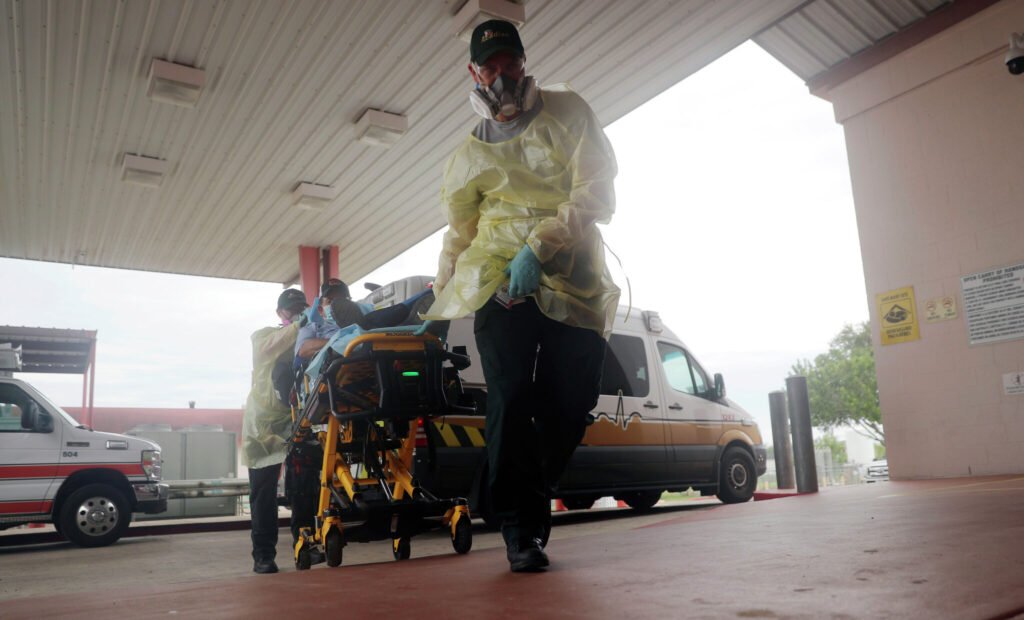Unraveling the Healthcare Crisis in Starr County: A Deep Dive into Uninsured Rates
Starr County, one of the rural areas in South Texas, is confronting a severe healthcare crisis exacerbated by exceptionally high uninsured rates. With approximately one-third of its residents living below the poverty line, the county embodies the challenges faced by many rural communities in the United States. As policies shift and program funding wanes, local healthcare systems are under increasing stress, leading to grave concerns about the viability of medical services.
Background: The Uninsured Dilemma
Healthcare accessibility has long been a pressing issue in Starr County, where many residents rely on facilities such as the Starr County Memorial Hospital. This largely Hispanic community grapples with a reality where patients often show up in emergency rooms for conditions that could be addressed with basic outpatient care. For instance, urgent cases often take precedence, leaving the department swamped with patients who might not necessarily need immediate hospital interventions.
With the passage of the One Big Beautiful Bill Act, aimed at fiscal consolidation yet resulting in millions more Americans projected to become uninsured, medical professionals express growing alarm. The Kaiser Family Foundation reports that an estimated 14 million individuals could lose health coverage over the next decade.
Pressures on Local Healthcare Providers
Jake Margo Jr., a family physician at Starr County Memorial, emphasizes that emergencies dominate their practice, citing, "When you’re overwhelmed and you’re overrun, there’s only so much you can do." The situation is critical; ambulances frequently wait outside the emergency room for a bed to open up, illustrating the healthcare system’s staggering demand.
The pressing reality is that doctors and hospitals are stretching resources thin while struggling to manage the influx of uninsured patients. As hospitals across the country face potential closures due to rising costs and an inability to offer uncompensated care, Starr County acts as a microcosm for this broader concern.
Factors Leading to the Crisis
Recent legislative actions, particularly under the Trump administration, have led to fears of unmanageable healthcare debts. The GOP-controlled Congress has put forth measures that threaten to strip funding from critical healthcare programs. As proposed budget cuts loom, the already fragile system finds itself at risk of collapse.
Sara Rosenbaum from George Washington University’s Milken Institute School of Public Health aptly notes that disinsuring vast numbers of Americans will result in "many communities" facing a healthcare system crisis.
Local Impact: Rising Cases and Neglected Care
In areas like Starr County, primary care physicians face daunting workloads, managing nearly 3,900 patients each—a figure nearly three times the national average. Long-standing limitations on healthcare access mean that residents often forego preventative care, resulting in complications that escalate into emergency situations.
Dr. Margo articulates the dire circumstances, stating, “They come in with chest pain or they stop breathing. They’ve never seen a doctor. They’re literally dying.” Such circumstances are mirrored across South Texas, a region notorious for having some of the highest uninsured rates nationwide.
The Financial Strain on Healthcare Facilities
Questions of sustainability plague local healthcare systems heavily funded by Medicaid and subsidy programs. The cuts proposed under the Trump administration are projected to result in a $1 trillion reduction in federal health spending over the next decade.
For many residents, hospitals become their only option, leading to what Dr. Joseph Alpert refers to as a “stress” on healthcare systems. He states, "Uninsured patients stress the healthcare system," which channels resources away from those who can pay.
Sister to a patient who suffered from untreated medical conditions, local physician Chris Casso emphasizes the tragic consequences of healthcare inaccessibility, stating, “It’s going to be devastating.”
Community and Systemic Responses
Within this grim framework, advocates like Maria Salgado, a community health worker for MHP Salud, tirelessly work to bridge gaps in care. She engages with the community to facilitate Medicaid and Affordable Care Act (ACA) coverage opportunities—a role becoming increasingly precarious as funding cuts threaten these vital programs.
Chris Casso and other healthcare providers face the stark reality painted by the recent healthcare policies that are seen as prioritizing tax cuts for wealthier Americans at the expense of vulnerable populations. This philosophical shift has dire implications for community health, exposing residents to greater risks.
Conclusion: A Call to Action
The experiences in Starr County mirror broader national trends where shifts in healthcare policies jeopardize community health. As legislation continues to evolve, understanding its impacts through clear, comprehensive channels is essential to advocate for supportive provisions that prioritize health over profit.
To support the ongoing fight for accessible healthcare, interested individuals can learn more from resources such as the Kaiser Family Foundation, which provides vital insights and updates on healthcare dynamics affecting communities across the U.S.
As the crisis in Starr County unfolds, it underscores the need for a renewed focus on comprehensive healthcare reform to ensure that vulnerable populations receive the care they need, when they need it.


